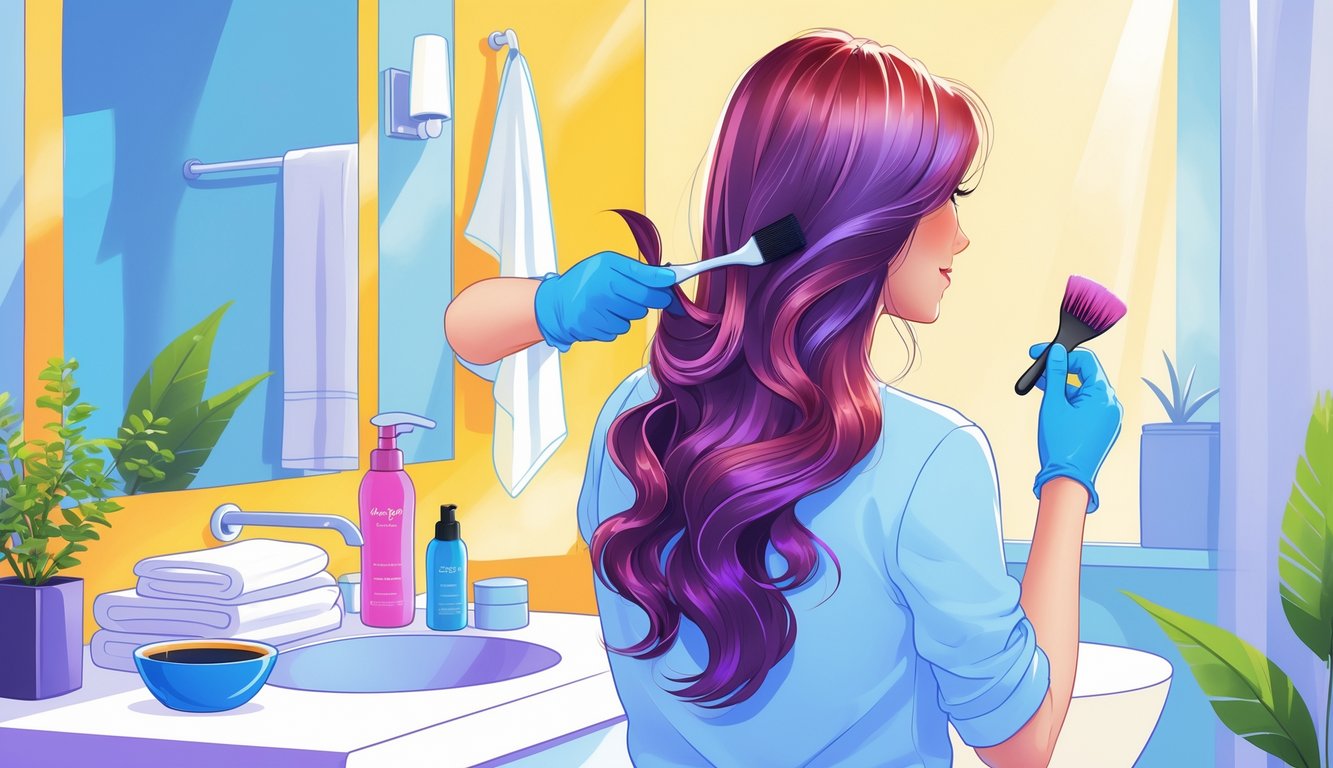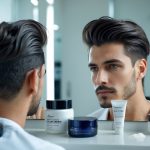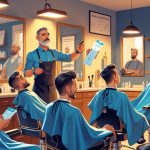
Mastering Color Application Techniques
Just stained my bathroom sink again. Color everywhere except where I wanted. That can’t be normal. But the right technique? Total game-changer—roots look good, no patchiness, and highlights finally blend instead of looking like a zebra. Or, you know, close enough.
Techniques for Even Coverage
Let’s just get this out of the way: sectioning hair is the worst. It’s not cute, it’s not fun, and I’m always losing those stupid butterfly clips. Four sections—front, back, left, right—unless you’ve got a mane, then suddenly you’re parting it like you’re slicing up some sad, uneven pizza. I don’t know where my clips go. I swear I buy them.
I always forget the baby hairs around my ears and neck. Why are those the hardest spots? The box screams “FULL COVERAGE!” and I still walk around with a weird halo. I use a brush, not the bottle nozzle, because my colorist once looked me dead in the eye and said, “You want ketchup hair? Use the bottle.” So, fine, brush it is.
If you want to avoid that weird root glow, don’t start at the scalp. Hot roots? Not cute. The timing on the box? Lies. I trusted it once, and my hair was pink for a third of a year. Never again. Garnier’s tips are all about small sections and slow progress, but who has the patience? Still, it’s the only way I don’t end up with splotches.
Highlighting, Balayage, and Ombre at Home
Balayage. Oh my god. “Freehand” is apparently code for “looks like I let a toddler finger-paint.” Less product, shorter strokes, Pinterest says. My left hand? Doesn’t listen. Feathering from the mid-shaft supposedly gets the blend, but I start at the roots and get stripes. Are raccoon highlights a thing? They shouldn’t be.
Ombre is worse. Tiny elastics, panic, and the ends go white while the top stays dark. My cousin melted her hair once. She still talks about it. Now I set the timer way too short because I’m not risking it. Nobody tells you how stressful this is.
Foil? Real salon foil is a myth. I use kitchen foil because I always forget to buy the real stuff. It’s probably wrong, but whatever. The at-home coloring guide diagrams help until my cat walks through the dye and it all goes sideways. Why do pets love chaos?
Tips for Picture-Perfect Results
Wearing an old button-down backwards is the only hack I never mess up. Sliding out without smearing dye everywhere feels like a win. Nobody ever talks about prepping with clarifying shampoo days ahead, not hours. I learned the hard way—color slides right off otherwise. Vaseline on the hairline? Saved my eyebrows. Thanks, random stylist on Instagram.
Strand tests. Who actually does them? I always skip, then regret it. Bad color, wasted time, endless complaints. I run out of color-safe shampoo and use whatever’s in the shower, which always ruins my color.
Mirrors never help. I use my phone in selfie mode to see the back of my head—still miss patches. Byrdie’s tips are full of weird advice (steamy bathroom? Sure, until I forget and the dog barks and the timer’s gone). Roots still aren’t right. Story of my life.
Special Considerations for Gray Coverage
Ever grab the wrong box for a root touch-up? I have. Everyone messes up gray coverage, even the pros. It’s never just slap on dye and chill. Every brand claims “100% gray coverage,” but patchiness always finds me.
Achieving 100% Gray Coverage
Last month, I spent way too much on a salon kit—was supposed to be foolproof. It wasn’t. My hairline looked like a polka-dot party because I didn’t know grays around the temples need more time or a double coat. So there I am, coloring the same spot twice and hoping for a miracle.
Good lighting exposes every spot you missed. eSalon colorists say use a tiny brush, section by section, and let stubborn areas sit longer—but not too long, unless you like breakage. I once tried adding conditioner to the dye. Don’t. It just waters it down.
Biggest lesson: always do a strand test behind your ear, even if you’re bored out of your mind. Garnier says grays are drier, so clarify first and don’t leave any product in. I forget half the time, then wonder why it looks weird.
Best Products for Persistent Grays
The drugstore aisle is a nightmare. “Medium brown” turns green on gray hair. Permanent creams with high pigment—Clairol, Wella Koleston—work best for me. I always look for “resistant gray” on the box. Semi-permanent? Not even going to risk it.
Sally Beauty staff are weirdly honest. Ammonia-based tints work better, even if they smell like death. My friend tried Naturtint’s method, splitting color between temples, back, and even brows. Still had to touch up three weeks later.
Swatch charts are lies. Test the formula on a paper towel first. It’s weird, but “close enough” is better than a disaster.
Maintaining Color Vibrancy in Graying Hair
My gray hair loses color in a flash. Coconut oil? Stripped my dye instantly—nobody warned me. Sulfate-free shampoo (Redken Color Extend is my go-to) helps, but I always run out and grab whatever’s cheap. Bad move.
Every stylist whispers about deep conditioners with protein or ceramides. DIY masks don’t cut it. I sometimes remember to use a purple toner for brassiness, but usually only after it’s too late.
Recoloring every four weeks is a chore. If I skip, everyone notices my roots before I do. Weirdest thing I tried: clear gloss two weeks after coloring. It actually brought back some shine, which shocked me.



